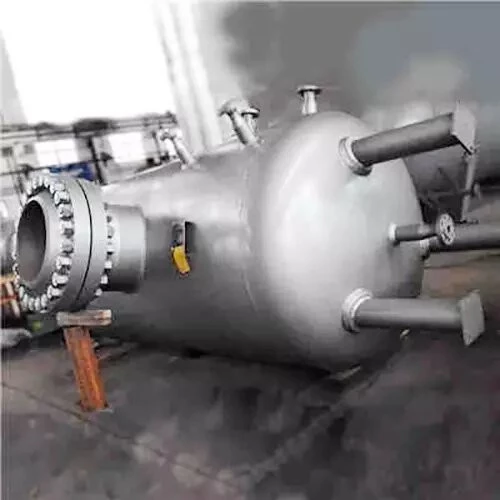Pressure Vessel Classification in China: Standards and Regulations
A pressure vessel is a specialized container designed to store liquids or gases under specific pressure conditions. Constructed from either metal or nonmetal materials, these pressure vessels have stringent safety requirements to ensure the secure storage of liquids or gases.
These pressure vessels must be tightly sealed and capable of withstanding pressure loads, making them essential for various industrial processes such as reactions, mass transfer, separation, and storage. Industries such as petrochemicals, energy, and scientific research heavily rely on pressure vessels, playing a crucial role in the national economy.
These pressure vessels must be tightly sealed and capable of withstanding pressure loads, making them essential for various industrial processes such as reactions, mass transfer, separation, and storage. Industries such as petrochemicals, energy, and scientific research heavily rely on pressure vessels, playing a crucial role in the national economy.
The pressure differential between the internal and external pressures poses inherent dangers. Throughout the history of pressure vessel development, fatal accidents have occurred due to defective designs, poor workmanship, and misoperations. Consequently, engineering authorities in different countries regulate the design, manufacture, and operation of pressure vessels. Regulations, including maximum working pressure and temperature, vary among countries.
Regulation
Regulation
In China, the Supervision Regulation on Safety Technology for Stationary Pressure Vessels (hereinafter referred to as Regulation) was issued by the General Administration of Quality Supervision, Inspection, and Quarantine on August 31st, 2009, and became effective on December 1st, 2009. The classification of pressure vessels in China follows Regulation TSG R0004-2009. Initially categorized based on the contained medium, vessels are further classified into types I, II, and III according to their pressure and volume. The previous classification directly into first, second, and third classes is now obsolete, emphasizing a more detailed categorization approach.

A separator complying with China's standard GB150 Ⅱ
Pressure vessels can be classified in terms of their functions, production and supervision.
1. Functions
According to the different functions, pressure vessels can be divided into the following four types.
- A reaction vessel is a container in which physical reactions and chemical reactions occur among media.
- A heat exchanger is a container in which two or more media exchange their heat.
- A separator is a container in which mass transfer, gas purification, gas-liquid separation, solid-liquid separation and solid-gas separation occur among different media.
- A storage tank is a container used for having balanced and buffer effects on the pressure, as well as used for gas storage, liquid storage, etc.
2. Working pressures
Pressure vessels can be categorized based on their working pressures into four types: low-pressure vessels, medium-pressure vessels, high-pressure vessels, and ultrahigh-pressure vessels.
- Low-pressure Vessel (Code L): 0.1 MPa<P<1.6 MPa
- Media-pressure Vessel (Code M): 1.6 MPa≤P<10 MPa
- High-pressure Vessel (Code H): 10 MPa≤P<100 MPa
- Ultrahigh Pressure Vessel (Code U): P≥100 MPa
3. Contained medium
Pressure vessels can be classified based on their contained media into four categories: non-flammable and non-toxic pressure vessels, toxic pressure vessels, flammable pressure vessels, and highly toxic pressure vessels.
Pressure vessels can be classified based on their contained media into four categories: non-flammable and non-toxic pressure vessels, toxic pressure vessels, flammable pressure vessels, and highly toxic pressure vessels.
- Non-flammable and non-toxic pressure vessel
- Toxic pressure vessel
- Flammable pressure vessel
- Highly toxic pressure vessel

